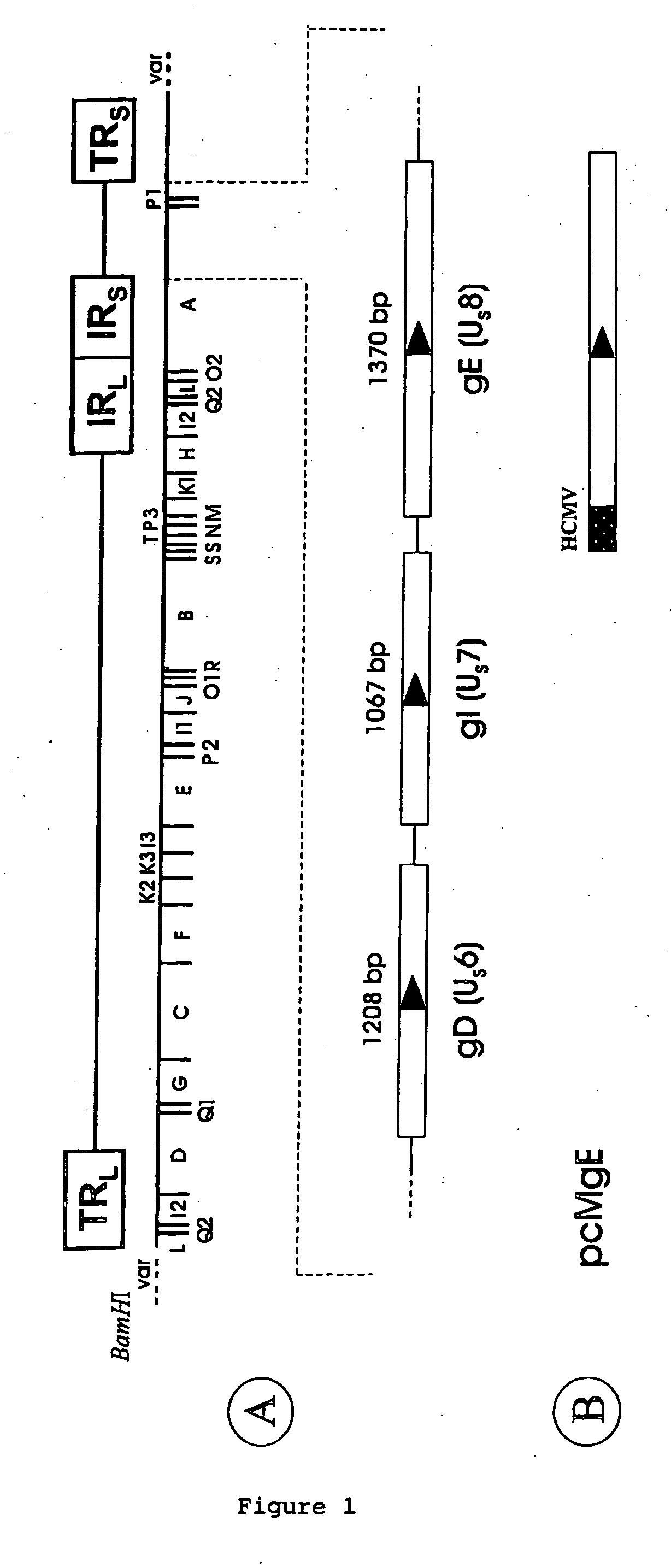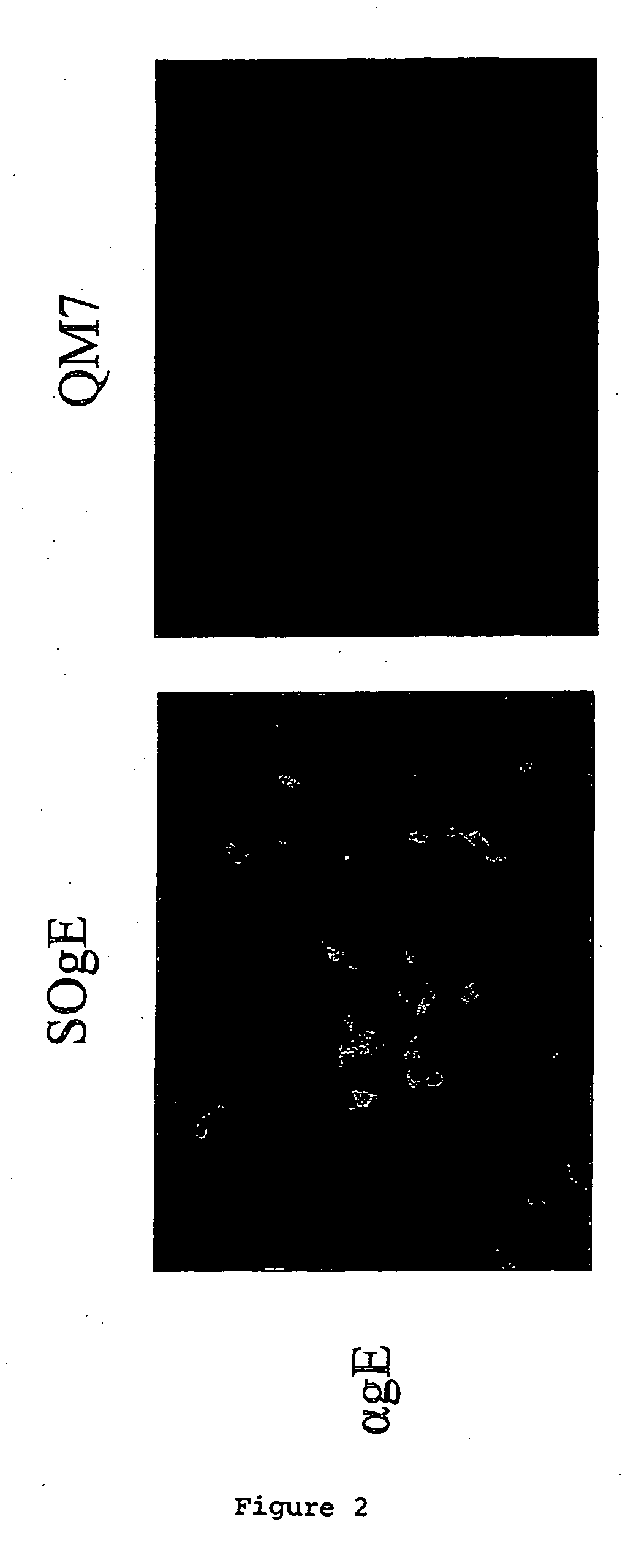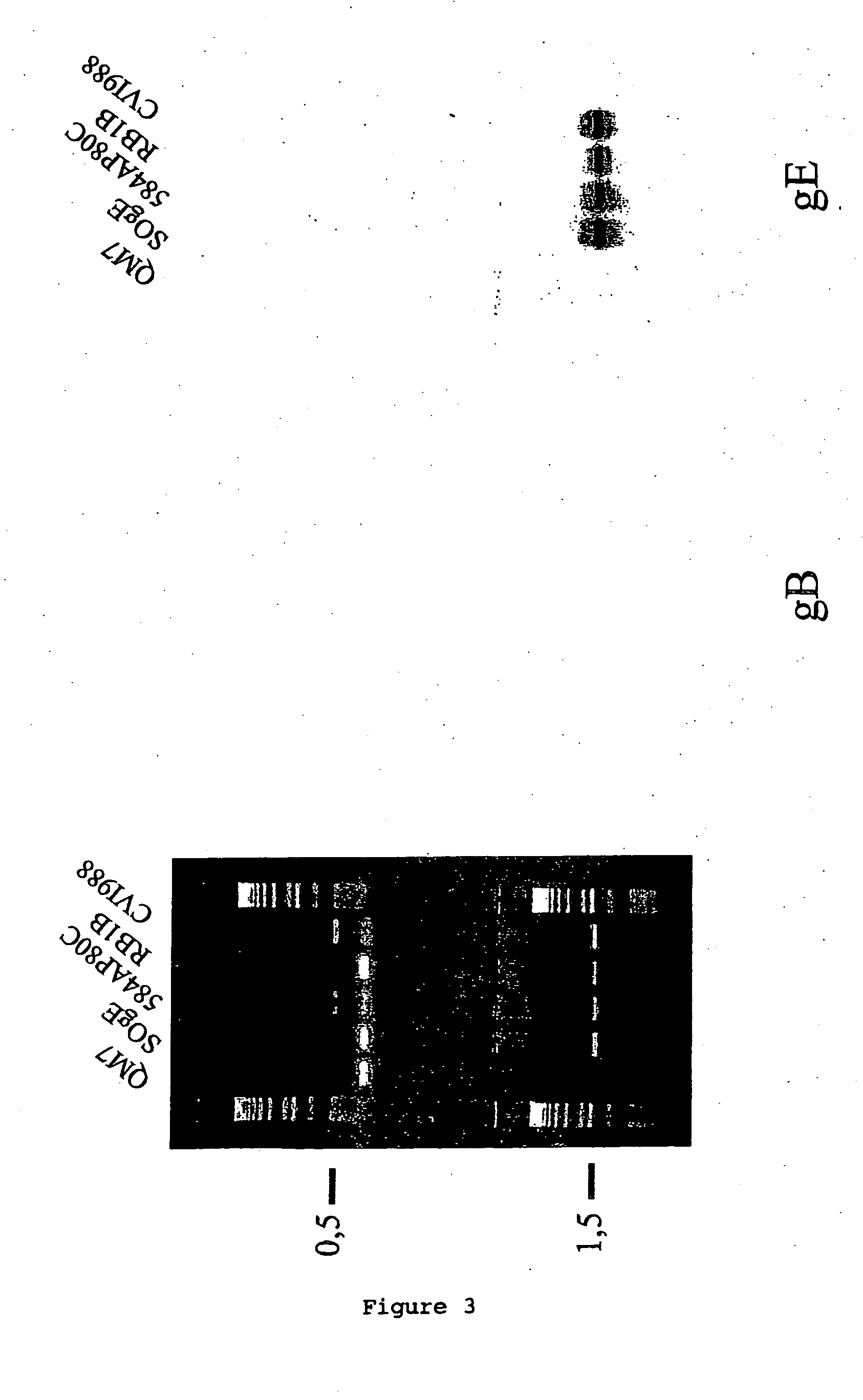Continuous cell line for the production of vaccines
a cell line and vaccine technology, applied in the field of immunology and biotechnology, can solve the problems of inability to protect against newly emerging vvmdv, inability to produce mdv in vitro, laborious and difficult standardization, etc., and achieve the effect of avoiding the formation of mdv
- Summary
- Abstract
- Description
- Claims
- Application Information
AI Technical Summary
Problems solved by technology
Method used
Image
Examples
example 1
[0032] Animals. White Lohmann selected leghorns (LSL) (Lohmann, Cuxhaven, Germany) were used and wing-banded on the day of hatch. Birds were kept in cages, and received food and water ad libitum.
[0033] Cells and viruses. Chicken embryo fibroblast cells (CEF) were prepared as described previously (Schumacher et al., 2000). Quail muscle QM7 cells (ATCC cell number CRL-1632) were used for preparation of the permanent cell line. The MDV strains used were CVI988 (MarekVac forte®, Lohmann, Cuxhaven, Germany), 584Ap80C37, RB1B (kindly provided by Dr. T. F. Davison, Compton, UK), and EU1. Strain 584Ap80C or its US2-negative derivative BAC20 virus reconstituted from an infectious BAC clone of MDV (Schumacher et al., 2000) were propagated on CEF29. MDV strain EU1 is a virus isolated in 1992 from a flock in Italy which had been immunized with an HVT vaccine. EU1 was shown to be free of chicken infectious anemia virus, avian leukosis and reticuloendotheliosis viruses, and infectious bursal dis...
example 2
Generation of a Cell Line Constitutively Expressing Glycoprotein E of MDV Vaccine Strain CVI988
[0038] QM7 cells were transfected by the calcium phosphate precipitation method as described earlier29. QM7 cells were grown on 6-well plates until approximately 70% confluency and transfected with 10 μg of recombinant plasmid pcMgE30. Transfected cells were overlaid with DMEM medium containing 5% of FCS and 1000 μg per ml of G-418 (Gibco-BRL). After 2 weeks of cell culture in the presence of the antibiotic, single cell clones were picked into 96-well plates. After cell clones had grown to confluency in 96-well plates, they were split 1:2 and IIF using the convalescent MDVI serum was performed on the cell clones. A cell clone in which virtually every cell expressed MDV gE was identified (FIG. 2), and termed SOgE. SOgE cells were expanded and checked for gE expression in weekly intervals. In the presence of G-418, gE expression proved stable for more than 15 weeks. In the absence of the dr...
example 3
SOgE Cells Express Functional MDV gE
[0039] The question of expression of functional MDV gE by the generated cell line was addressed by the analysis of growth of a gE-negative MDV on SOgE cells. Glycoprotein E has been shown to be essential for MDV growth in vitro30. Therefore, 20ΔgE DNA encoding gE-negative BAC20 virus (Schumacher et al., 2000) was transfected into SOgE or QM7 cells and plaque formation was monitored. Whereas 20ΔgE plaques were readily observed on SOgE cells after IIF using anti-gB mab 2K11, only single infected cells could be visualized with the mab on parental QM7 cells (FIG. 4). These results confirmed that functional gE was produced by SOgE cells which was able to trans-complement the essential MDV-1 gE in a gE-deficient virus.
PUM
| Property | Measurement | Unit |
|---|---|---|
| size | aaaaa | aaaaa |
| size | aaaaa | aaaaa |
| size | aaaaa | aaaaa |
Abstract
Description
Claims
Application Information
 Login to View More
Login to View More - R&D
- Intellectual Property
- Life Sciences
- Materials
- Tech Scout
- Unparalleled Data Quality
- Higher Quality Content
- 60% Fewer Hallucinations
Browse by: Latest US Patents, China's latest patents, Technical Efficacy Thesaurus, Application Domain, Technology Topic, Popular Technical Reports.
© 2025 PatSnap. All rights reserved.Legal|Privacy policy|Modern Slavery Act Transparency Statement|Sitemap|About US| Contact US: help@patsnap.com



